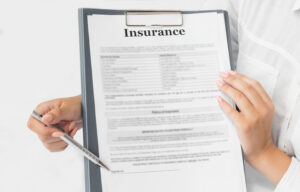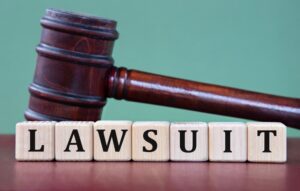A pedestrian accident claim in Missouri can take anywhere from a few months to well over a year to settle. We know that wide, uncertain timeframe is likely the last thing you want to hear when you are already dealing with physical pain, emotional trauma, and the stress of mounting medical bills after a collision.
The truth is, there is no simple calendar for justice because every person’s story and every accident are unique. The final timeline for a pedestrian accident claim to settle depends on a combination of crucial factors.
If you or a loved one was recently injured while walking in Cape Girardeau, Sikeston, Poplar Bluff, or anywhere in Southeast Missouri, you know how quickly life can be turned upside down. Southeast Missouri pedestrian accident attorneys are here to bring clarity during a time of confusion. Below, we’ll discuss each stage of the process, helping you understand what to expect and why patience, while incredibly difficult, is often your greatest ally in securing full and fair compensation.
The Most Important Factor: Your Physical Recovery
Above all else, the single biggest factor determining the timeline of your claim is your health. More specifically, it’s the time it takes for you to reach what’s known in the legal and medical worlds as Maximum Medical Improvement (MMI).
MMI is the point at which your doctors determine that your condition has stabilized. It does not mean you are fully healed or back to the way you were before the accident. It simply means you have recovered as much as you are expected to. You may still require ongoing treatment, physical therapy, or pain management for the rest of your life, but your long-term prognosis has become clear.
Why is reaching MMI so critical?
Imagine settling your claim just three months after an accident. At that point, you’ve had surgery on your broken leg, and the immediate bills are covered. But six months later, you learn the injury caused permanent nerve damage that will require ongoing pain medication and prevent you from returning to your physically demanding job. A year later, you find out you’ll need a second surgery.
If you had already settled, you would have no legal recourse to ask for more compensation. You would be left to bear those future costs, including medical treatments, lost wages, and diminished quality of life, all on your own.
Waiting to file a claim until you reach MMI allows your legal team to understand the full extent of your damages. This isn’t just about the hospital bills you have today; it’s about calculating a lifetime of costs. This includes:
- Past and Future Medical Expenses: Everything from the initial ambulance ride to future surgeries, physical therapy, prescription medications, and necessary medical equipment.
- Lost Income: The income you’ve already lost from being unable to work.
- Loss of Future Earning Capacity: If your injuries prevent you from returning to your old job or from working at all, this calculates the income you will lose over your lifetime.
- Pain and Suffering: Compensation for the physical pain, emotional distress, and mental anguish you have endured.
- Loss of Enjoyment of Life: Acknowledging how the injury has impacted your ability to enjoy hobbies, relationships, and daily activities.
A minor injury, like a sprain or simple fracture, might reach MMI in a matter of months. A catastrophic injury, such as a traumatic brain injury (TBI) or spinal cord damage, could take a year or even longer for doctors to fully assess the long-term impact. Rushing the process is a gamble with your future. An ethical and experienced legal team will always prioritize your long-term well-being over a quick, inadequate settlement.
Factor 2: Proving Fault and Liability
Before any settlement can be reached, it must be clear who was responsible for the accident. In some cases, liability is crystal clear. For example, if a drunk driver ran a red light and struck you in a marked crosswalk in Poplar Bluff, and the entire incident was captured on a traffic camera, proving fault will be relatively quick.
However, many pedestrian accidents in Southeast Missouri are not so simple. The driver might claim you “darted out” from between parked cars. The accident might have happened at night on a poorly lit road. There may be no eyewitnesses.
When liability is disputed, the timeline extends significantly. A thorough investigation must take place to build a strong case. This process can involve:
- Gathering Evidence: Obtaining the official police report, interviewing witnesses, and canvassing nearby businesses in areas like Scott City or Sikeston for any surveillance footage that may have captured the incident.
- Accident Reconstruction: In complex cases, an accident reconstruction expert may be hired. These professionals use physics, engineering, and forensic evidence to recreate the accident scene and determine factors like vehicle speed, sightlines, and the sequence of events.
- Reviewing Missouri Law: Your legal team will analyze specific state and local traffic laws. Did the driver fail to yield the right-of-way? Was the driver distracted by their phone? Missouri follows a “pure comparative fault” rule, which means you can still recover damages even if you are found to be partially at fault. However, your compensation will be reduced by your percentage of fault. Negotiating this percentage can be a lengthy process that adds time to your claim.
The more complex the liability dispute, the more time and resources are needed to build a case that forces the insurance company to accept responsibility.
Factor 3: The Insurance Company’s Approach
You must remember that the at-fault driver’s insurance company is a business. Their primary goal is to protect their profits by paying out as little as possible on claims. Their behavior and tactics play a massive role in how long your settlement takes.
Some adjusters may be reasonable and willing to negotiate in good faith once presented with a well-documented claim. In these cases, a fair settlement can be reached relatively quickly after you’ve reached MMI.
Unfortunately, many insurance companies employ a “delay, deny, defend” strategy:
- Delay: They may take an unreasonably long time to respond to calls or letters. They might request the same documents multiple times or bury your legal team in unnecessary paperwork. They do this hoping that the mounting financial pressure will force you to accept a lowball offer out of desperation.
- Deny: They may deny liability altogether, even in the face of strong evidence, forcing your case into a longer and more contentious process. They might unfairly try to shift 100% of the blame onto you.
- Defend: If you refuse to accept an unfair offer, they will defend their position, which often means you must file a lawsuit to get them to take your claim seriously.
An experienced SEMO pedestrian accident lawyer will recognize these tactics immediately. They can counter them by keeping the pressure on, providing comprehensive and irrefutable evidence, and demonstrating that they are fully prepared to take the case to court if a fair offer is not made.
Factor 4: The Value of Your Claim
It may seem counterintuitive, but the larger and more valuable your claim is, the longer it will likely take to settle. An insurance company might quickly settle a claim for $20,000 to cover a broken wrist because it’s a relatively low financial risk for them.
However, a claim for $2,000,000 to cover a permanent brain injury that requires lifelong care is a completely different matter. For a high-value claim, the insurance company will:
- Investigate More Deeply: They will scrutinize every single detail of your medical history, your employment records, and the accident itself, looking for any possible reason to reduce the value of your claim.
- Hire Their Own Experts: They will likely hire their own medical experts to challenge the opinions of your doctors regarding your prognosis and future care needs.
- Fight Harder and Longer: The financial stakes are high, and they will use all their resources to minimize their payout. This often means refusing to offer a fair settlement and forcing the case into the litigation process.
While it is frustrating, this intense scrutiny is why it is so crucial to have a legal team with the resources and experience to build an ironclad case that can withstand any challenge.
Factor 5: The Need to File a Lawsuit (Litigation)
The vast majority of personal injury claims are settled out of court. However, if the insurance company refuses to make a fair settlement offer, your only remaining option is to file a lawsuit. This action moves your case from the private negotiation phase into the public court system, a process known as litigation.
Filing a lawsuit does not mean your case will necessarily go to trial. In fact, filing a suit often acts as the catalyst that finally brings the insurance company to the negotiating table with a serious offer. They see you are not backing down and that a jury trial, which is expensive and unpredictable for them, is a real possibility.
However, the litigation process itself has a distinct and often lengthy timeline:
- Filing the Complaint: Your attorney files the official legal documents that initiate the lawsuit.
- Discovery: This is typically the longest phase of litigation. Both sides exchange information and evidence. It includes written questions (interrogatories), requests for documents, and depositions (sworn, out-of-court testimony from you, the driver, witnesses, and experts). This phase can easily take a year or more.
- Mediation: Often, the court will order the two sides to attend mediation. This is a formal settlement conference where a neutral third party (the mediator) helps facilitate negotiations. Many cases settle at this stage.
- Trial: If all negotiations fail, your case will be scheduled for trial. Only a very small percentage of cases ever make it to a jury trial. The preparation for trial is intensive, and the trial itself can last for days or even weeks.
It’s important to understand that even after a lawsuit is filed, settlement negotiations can and often do continue right up until the day of the trial.
A General Timeline: From Accident to Settlement
To help you visualize the process, here is a simplified, step-by-step look at the phases of a typical claim:
- Phase 1: Immediate Aftermath (Days to Weeks): Your priority is seeking medical care. You should also report the accident to the police and consult with an attorney to understand your rights.
- Phase 2: Investigation & Treatment (Weeks to Months… or Years): You focus on healing and following your doctors’ orders. Your legal team gathers evidence, communicates with the insurer, and handles all the paperwork while they monitor your progress toward MMI. This is often the longest and quietest phase for you, but crucial work is being done behind the scenes.
- Phase 3: The Demand Package (1-2 Months after MMI): Once you reach MMI, your lawyer compiles all your medical records, bills, proof of lost wages, and expert reports into a comprehensive “demand package.” This is sent to the insurance company with a formal demand for a specific settlement amount.
- Phase 4: Negotiation (Weeks to Months): The insurance adjuster reviews the demand and will come back with a counteroffer, which is almost always significantly lower. A period of back-and-forth negotiation begins.
- Phase 5: Resolution (A Few Weeks to 2+ Years):
- If a Settlement is Reached: You will sign release documents, and the insurance company will issue the settlement check. This final part usually takes 4-6 weeks.
- If a Lawsuit is Filed: The litigation timeline begins, which can add one to two years (or more) to the process before a resolution is reached, either through a later settlement or a trial verdict.
Our Experienced Pedestrian Accident Lawyer Is Here to Help
The path to a fair settlement after a pedestrian accident is rarely short or easy. It requires patience, diligence, and a deep understanding of the legal system and insurance industry tactics. The emotional and financial stress can be challenging, especially when you should be focused on one thing: your recovery.
This is why you should not have to face it by yourself. While the process can seem daunting, having a dedicated and compassionate legal team by your side can lift that heavy burden from your shoulders.
At Cook, Barkett, Ponder & Wolz, we understand the challenges you are facing. With deep roots in Southeast Missouri, our experienced personal injury trial attorneys have been fighting for people just like you for decades. We know the local courts, we understand the unique challenges of cases in our community, and our success comes from not just knowing the law, but knowing our clients.
If you or a loved one has been injured in a pedestrian accident in Cape Girardeau, Sikeston, Poplar Bluff, or anywhere in the SEMO region, please don’t wait. Contact the dedicated team at SEMO personal injury law firm today at (573) 335-6651 or through our online form for a free consultation. Let us fight for your rights and help you move forward.






